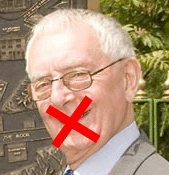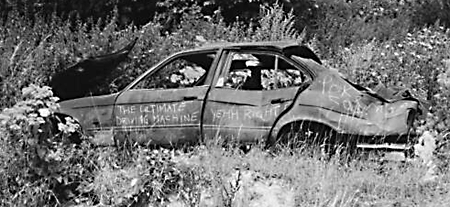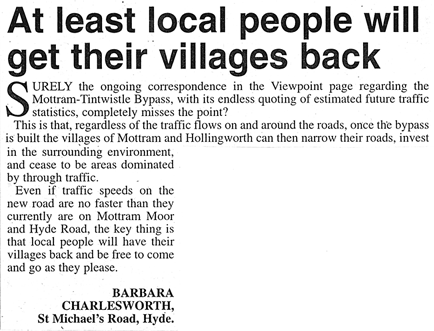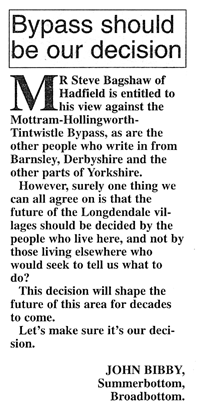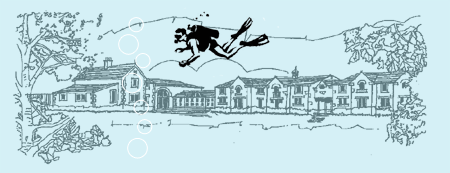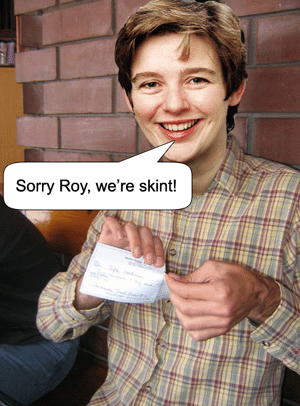
There has been a lot of coverage in the press recently regarding the issue of housing in High Peak for younger persons from the locality who cannot get a foot on the housing ladder. MP Tom Levitt has added his voice to the debate, and put the boot in for good measure to the concept of Village Greens, which according to our MP have allowed a few selfish individuals to stop developments and sports halls in Buxton.
At first sight Mr Levitt’s indignation with such selfish individuals seems wholly in the right, but sometimes - or perhaps quite often in his case - it is worth looking that little bit further, and this seems one of those instances.
It is worth noting that there are many houses in High Peak, which are not in the complete sense of the word “homes” because they are wholly or mainly unoccupied. These are second homes or houses bought as investments. It is not unusual in fact to find a worryingly high percentage of the housing stock on many local streets out of effective circulation for one reason or another, predominantly due to absentee or landlord ownership.
This might not seem a relevant concern for Mr Levitt and the government when they advocate more local housing supply for local people. However it should be, as the policy described below indicates something of a contradiction in their position. Whilst bemoaning the lack of supply the government will from this April start increasing subsidy to such unused stock by cutting the capital gains tax on 2nd homes. This practice that can only inflate prices and reduce the availability for local people , so it does not sit well with Mr Levitt's complaint.
MSN Money reports, and we quote in case the the link seems dead -
Good news for landlords
This is great news for landlords and owners of a second non-residential property. Investors pay CGT on the difference between the price they paid for the asset and the price they sell it for. As it stands, the tax rate is 40% for the first three years of property ownership, falling by 2% a year to a minimum rate of 24% after 10 years of ownership. The new system means that the length of time a property has been owned will be irrelevant; someone who has owned a second home for one year will be taxed at the same rate as someone who has owned theirs for 20 years. The capital gains annual exemption will continue to apply which (in 2008/09) will mean the first £9,200 of the gain is exempt from the tax charge. As far as the buy-to-let market is concerned, landlords will certainly emerge as the winners of the situation, as they will see a significant reduction in tax should they decide to sell a property.
In fact the selfishness which Mr Levitt deplores in one case – assuming it is selfish to care about precious green open spaces and voluntarily make unpaid efforts to protect them– is being actively encouraged by fiscal measures promoted by his government to enable people to have more homes than they actually need, either as capital investment or for personal use.
It is a somewhat weak position to adopt really, trying to expand the new build on the back of the needs of local people yet at the same time allowing, in fact encouraging, the removal of large amounts of housing stock from the same local supply.
We believe Mr Levitt adopts such a cockeyed or contradictory approach towards housing supply - i.e. abetting private ownership yet seeking more social supply - because there is a subtext behind his utterances which we would spell out as follows
The subtext of Mr Levitt’s approach is to support the construction industry and developers at all costs, and use the plight of local people to do so. Also throw in a swipe at environmentalists if possible and try to undermine their legitimate use of village green legislation that developers see as obstructing invasion of rural areas for profits. Who suffers from this cockeyed thinking? Well above all the environment, which is generally overlooked by the politician, leaving it to allegedly selfish people to use their own time and unpaid labour to try and find ways to keep the area somewhere that people actually do want to live in. How very selfish of them!
And this really is the crux of the issue, because assuming that new build is given a free rein on village greens and the green belt, and the current attitude towards housing as capital rather than a home is continued, it begs an interesting question.
14,000 homes on down the line - and that is the plan for High Peak in the coming years - will anyone, local or otherwise, very much want to live in High Peak Borough anymore. There is after all a distinct lack of buyer enthusiasm for over housed places like Droylsden or Dukinfield. Sadly such a sorry outcome can be the only outcome of Mr Levitt’s position, which is why it must be resisted. Despite the many shots of beauty on the MP’s web site these are simply gratuitous in this case, and the vital remit to protect the environment remains the remit of unselfish volunteers, who deserve our full thanks
With regard to Village Greens, they require our utter support and it is very important that they are assisted and this legislation safeguarded. It is meanwhile it is time locally and nationally that a coherent and environmentally responsible policy in the field of housing is developed, where local people can enjoy a local home without being forced to sign up to environmental destruction to get it. If we can’t have a reasonably buoyant economy without environmental destruction then there is something seriously amiss.

